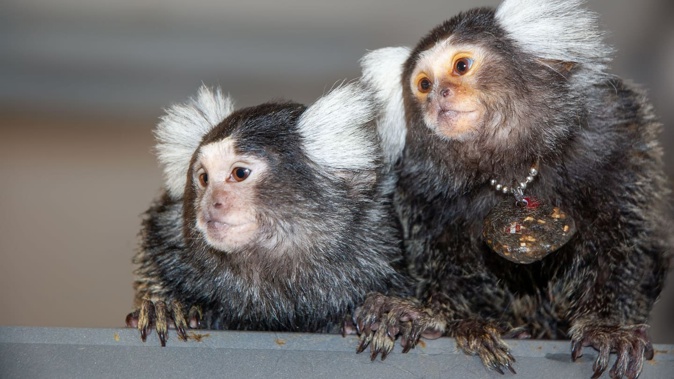
Marmoset monkeys use distinctive, whistle-like “phee calls” to address specific monkeys, similar to how humans use names, according to a study published on Thursday in the journal Science.
The discovery adds marmosets to a short list of animals that appear to use names and possess social and vocal communication abilities that were once thought to be unique to humans. Bottlenose dolphins have “signature whistles,” and other dolphins imitate those to address specific individuals. African elephants appear to name other elephants through subtle differences in rumbling noises, a recent study found.
Naming individuals requires sophisticated cognitive abilities, said David Omer, a neuroscientist at Hebrew University of Jerusalem who led the study. Animals must map their social environment, distinguish between individuals and conjure a representation of the other animal in their minds.
The next step for his lab, he added, will be to identify the circuits in the brain that allow marmosets to do this.
Chatty monkeys
 Bareket, a baby marmoset monkey in David Omer's laboratory at Hebrew University of Jerusalem. Photo / David Omer
Bareket, a baby marmoset monkey in David Omer's laboratory at Hebrew University of Jerusalem. Photo / David Omer
Marmosets are chatty monkeys that live in small family groups. They deploy chirps, trills and phee calls in their conversations. For this study, Omer and colleagues focused on the phee calls, which monkeys make when they are out of sight from one another in the dense rainforests of South America where they live.
Phee calls are known to be long-distance localization calls that contain information about the sex and identity of the monkey making the noise - perhaps the marmoset equivalent of saying, “I’m over here.” But scientists found the calls contained something else when they took 10 captive marmosets from three family groups, paired them in various combinations and separated their enclosures with a curtain. In analysing more than 50000 calls, they discovered phee calls also contained information about the recipient - similar to a name.
To identify those names, scientists used machine learning, a type of artificial intelligence. They discovered distinctive acoustic patterns when the monkeys were calling different individuals. They found that each monkey had a name, though they don’t know which specific part of the vocalization contains the name, said Guy Oren, the graduate student who has spent two years listening to the calls and analyzing the data.
The scientists also found that members of a family had similar names for a given monkey as if they were speaking the same dialect. When they played back a call to a monkey that included its name, the monkey was more likely to respond than if it heard a call directed to another monkey.
A call to listen more closely
The study raises an obvious question: Is this a rare ability limited to a handful of species? Or have we just not been listening closely enough?
Judith Burkart, an evolutionary anthropologist at the University of Zurich, who studies marmoset cognition and communication, said the study was “intriguing” and raised a host of follow-up questions about why it may be helpful for animals to use names. So far, the animals that have been found to use names are species that cooperate to raise offspring, she noted. But that doesn’t mean they are the only ones.
“Absence of evidence is not evidence of absence. We don’t know if the phenomenon is absent in most species or if researchers simply have not been looking for it so far,” Burkart wrote in an email. The phee calls, she noted, also contain more information than a name - it’s not as simple as the marmoset equivalent of shouting out “Robert” or “Susan.”
Several scientists who study vocal communication in other animals said they were not surprised to see more animals with such sophisticated cognitive and vocal abilities.
“It’s really exciting and very amazing,” said George Wittemyer, a professor of conservation biology at Colorado State University and one of the authors of a recent study showing that the rumbles of African elephants contain names. “This story about animals having arbitrary names for objects or each other has been this thing that’s so unique and rare in the animal kingdom. We put our paper out, and three months later there’s another species.”
Con Slobodchikoff, a professor emeritus of biology at Northern Arizona University who studies prairie dog vocalizations, has shown that subtle changes in frequency and timing within calls can contain vast amounts of information, such as the species, colour and shape of a predator.
“I think that as we refine our paradigms and our techniques of acoustic analysis, we will find that many other social animals have more complexity in their communication systems than we currently realize,” Slobodchikoff wrote in an email. “This paper is a good nudge toward us changing our views about animal capabilities and intelligence.”
-Carolyn Y. Johnson, Washington Post
Take your Radio, Podcasts and Music with you








